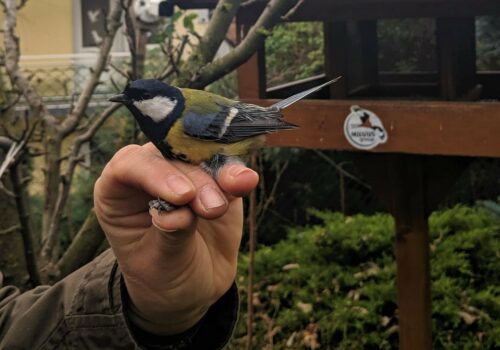After having broken all previous camp records last fall, we can consider the current season a more typical one: we ended our eleventh consecutive Autumn ringing with a total of 13 319 birds ringed, a number relatively close to the average of previous years. During the 105 ringing days we ringed individuals of 100 bird species, including several rare species.

The catch of some species fluctuates greatly between years; therefore, it is more informative to use the median rather than the mean to interpret their data. The median, unlike the mean, is not subject to the influence of very large or very small values. As such, this year we ringed 19% fewer Red-breasted flycatchers (Ficedula parva) than the species’ median for 2014-2023; the same is true for the Chiffchaff (Phylloscopus collybita), whose catch this year was 21% lower than the multiannual median of the species. In contrast, the catch of Sedge warblers (Acrocephalus schoenobaenus) was 66% higher than the multiannual median, and that of the Willow warbler (Phylloscopus trochilus) was 26% higher than the median of previous years (Fig. 1). Blue tits (Cyanistes caeruleus) and Bearded reedlings (Panurus biarmicus) are captured in significant numbers only in some years, so it is not a huge surprise that this year we ringed only 33% of the multi-year median of Blue tits and captured ten times as many bearded reedlings as the median of previous years instead.
We received information during the year about four new foreign recaptures of the camp: a Willow warbler was recaptured near Murmansk, Russia, a Sedge warbler and a Reed bunting (Emberiza schoeniclus) were recaptured in Israel and another Reed bunting was recaptured in Tuzlivski Lymany National Park in Ukraine. In turn, we recaptured a Chiffchaff ringed in March 2023 in Jerusalem.
As in previous years, this year we also managed to capture species rarely observed in Romania (Fig. 2). Thus, this year’s list of rare species started with a Blyth’s reed warbler (Acrocephalus dumetorum), which was followed by Western Bonelli’s warbler (Phylloscopus bonelli), a Hume’s leaf warbler (Phylooscopus humei), two Pallas’s leaf warblers (Phylloscopus proregulus), a Little bunting (Emberiza rustica) and an Eastern stonechat (Saxicola maurus).

This year the ringing activities were carried out by more than 100 volunteers, to whom we are deeply grateful. We thank the Administration of the Danube Delta Biosphere Reserve for their excellent cooperation, and we hope that they will continue to be our partners in the future.































